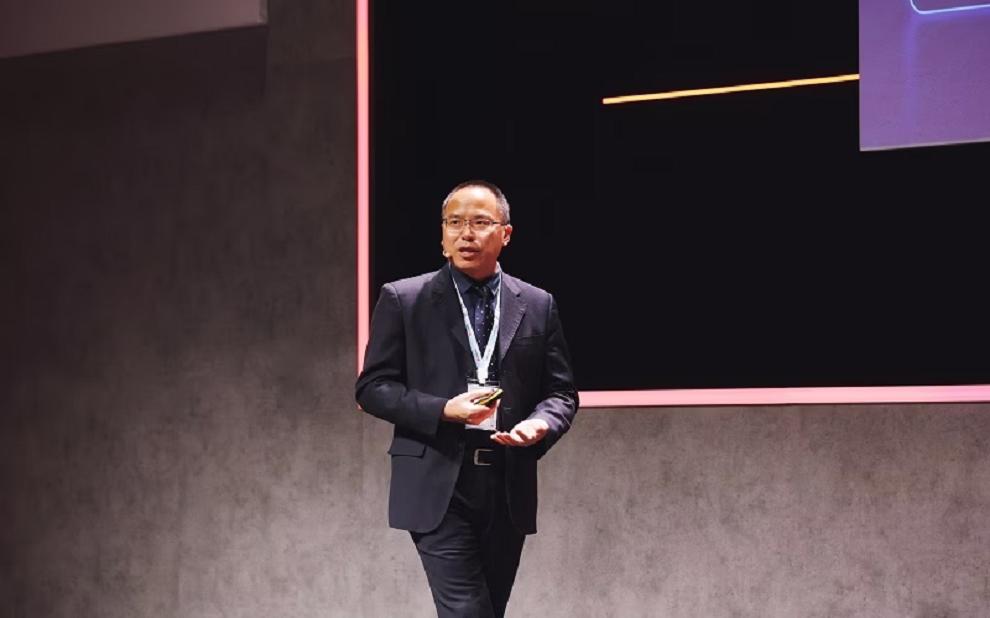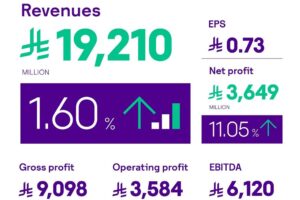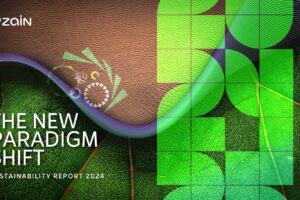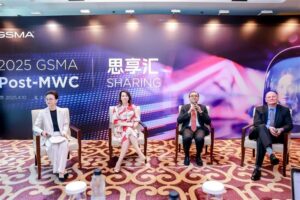At MWC Barcelona 2024, Huawei unveiled 8 5.5G innovation practices to help operators build 5.5G multi-path target networks. Cao Ming, President of Huawei Wireless Solution, remarked: “As all industry elements are ready, we have entered the first year of 5.5G commercialization. Huawei’s full series of 5.5G products and solutions, with ‘Native Giga’ and ‘Native Green’ capabilities, help operators from around the world to achieve multipath 5.5G evolution across all bands.”
After three years of rapid development, 5.5G has progressed from vision to reality, and all of the standards, services, products, devices, businesses, and policies are ready. The first year of commercial use of 5.5G has officially arrived, and the commercial rollout of 5.5G is accelerating worldwide. While Middle Eastern operators have achieved scaled 5.5G commercialization, operators across Europe, Asia Pacific, and Latin America are verifying 10 Gbps, preparing for 5.5G commercialization in 2024.
Native GigaGreen Innovations Facilitate Multipath 5.5G Evolution
All bands are shifting to 5G, meaning 5.5G will use converged TDD and FDD networking. All operators are poised to evolve to 5.5G, but from different paths. Based on the core sub-6 GHz bands, operators build 5.5G networks for ubiquitous 5 Gbps. Meanwhile, based on mmWave and upper 6 GHz (U6G) bands, operators deliver 10 Gbps at hotspots for 5.5G
To facilitate multipath evolution to 5.5G across all bands, Huawei provides 5.5G GigaGreen full-series products and solutions, which are “Native Giga” with ultra-wideband and multi-antenna technologies, to improve performance by 10 times. They are also “Native Green” from architecture to hardware and software to support “0 Bit 0 Watt”. To date, 5.5G GigaGreen solutions have been widely employed around the world to support the efficient construction of 5.5G networks that offer the highest performance and energy efficiency.
Practice 1: Extremely large antenna array (ELAA) is upgraded from single-band to multi-band on 64T MetaAAU. With native dual-band converged antenna elements, the 64T MetaAAU supports high-band and low-band co-coverage to realize ubiquitous 5 Gbps. In China, the Middle East, and many other places, MetaAAU has been implemented for multi-carrier TDD capability verification, with multiple bands being combined, such as 3.5 GHz, 2.6 GHz, and 4.9 GHz, demonstrating its ability to simplify site construction while providing continuous 5 Gbps.
Practice 2: FDD ultra-wideband is upgraded to support all bands. The new Hepta-band RRU supports 7 bands across 700 MHz to 2.6 GHz, enabling existing 100 MHz of bandwidth to be reused for building 5-Gbps basic experience networks. Huawei provides FDD 8T8R and Massive MIMO products that support native GHz ultra-high bandwidth, allowing for maximum FDD spectral and energy efficiencies. In Cambodia, the triple-band 8T8R solution improves coverage by 6 dB and reduces power consumption by 30% compared with 4T6S. In Malaysia, triple-band Massive MIMO increases capacity by 4 times and traffic by 1.5 times for 4G, while allowing for a 7-times capacity boost for future 5G.
Practice 3: mmWave provides native ultra-high bandwidth, and is thus key to 5.5G 10 Gbps. Huawei provides the industry’s largest mmWave AAU with more than 2,000 antenna elements. This AAU supports a beam density that is four times that of competition modules, breaking through mmWave coverage bottleneck. In China, Finland, and a number of other countries, mmWave has shown effective for delivering a smooth, stable experience of around 10 Gbps in mobility scenarios.
Practice 4: LampSite X can work on both sub-6 GHz and mmWave bands, meaning it can support a native ultra-high bandwidth of up to 1.6 GHz. This makes it key to indoor 10 Gbps. In Hong Kong, the LampSite solution has allowed the development of a 10 Gbps business area where consumers can enjoy diverse AR shopping and navigation experiences. This has stimulated network traffic to grow by 23%, while bringing merchants more than HK$3.5 million in additional revenue.
Practice 5: Huawei has brought “0 Bit 0 Watt” to 5.5G full-series equipment to increase energy efficiency by 10 times based on “Native Green” architecture, hardware, and software. In idle mode, the power consumption is below 10 W and second-level wakeup is supported. In active mode, experience is guaranteed with 30% lower energy consumption. “0 Bit 0 Watt” has been verified on the live networks in Zhejiang, China, displaying all-day energy saving of more than 40%, with power consumption in days reduced by 30% and that at nights falling below 10 W.
Practice 6: With MAGICSwave, Microwave 2T is supported in all scenarios, with a maximum capacity of 50 Gbps, facilitating the evolution to 5.5G. Again, in Zhejiang, China, with microwave CA 2T, an operator was able to deploy 5G backhaul to an isolated island in just two days. In Nigeria, the long-haul microwave solution required 50% less hardware across all scenarios, allowing a significant reduction in tower load for a 30% TCO saving.
Practice 7: Huawei has introduced signal direct injection feeding (SDIF) to all antennas. The Eco antenna improves all-band energy efficiency by 20% under various configurations across different areas. The Marconi antenna is the industry’s first digital antenna with a low wind load and supports 2D beam adjustment without site visits, helping operators reduce OPEX. In Saudi Arabia, the Marconi antennas helped customers save 50% on rental fees. In Czech, the digital antennas helped increase traffic by 30%.
Practice 8: Huawei IntelligentRAN incorporates large communication models and RAN digital twin systems to support L4 network intelligence, helping operators reduce network costs and increase efficiencies. For example, in Hangzhou, China, proactive network O&M has been realized for operators to make emergency plans and thus reduce user complaints to zero. In Europe, SLA has been able to bring ultra-high-resolution live streaming to 95% of target scenarios. In Hubei, China, the multi-target energy saving policy has enabled operators to increase network traffic by 36% with an 18% lower energy consumption. “As we keep walking the walk, we can reach our goals,” concluded Cao Ming. “Huawei’s GigaGreen full-series solutions provide the most powerful performance with minimal resource consumption, helping operators sustain success in the 5.5G era with networks that offer the highest performance and energy efficiency.”
MWC Barcelona 2024 will be held from February 26 to February 29 in Barcelona, Spain. During the event, Huawei will showcase its latest products and solutions at stand 1H50 in Fira Gran Via Hall 1. With the 2024 commercial launch of 5.5G, Huawei is collaborating with operators and partners around the world to pursue exciting new innovation in networks, cloud, and intelligence.












